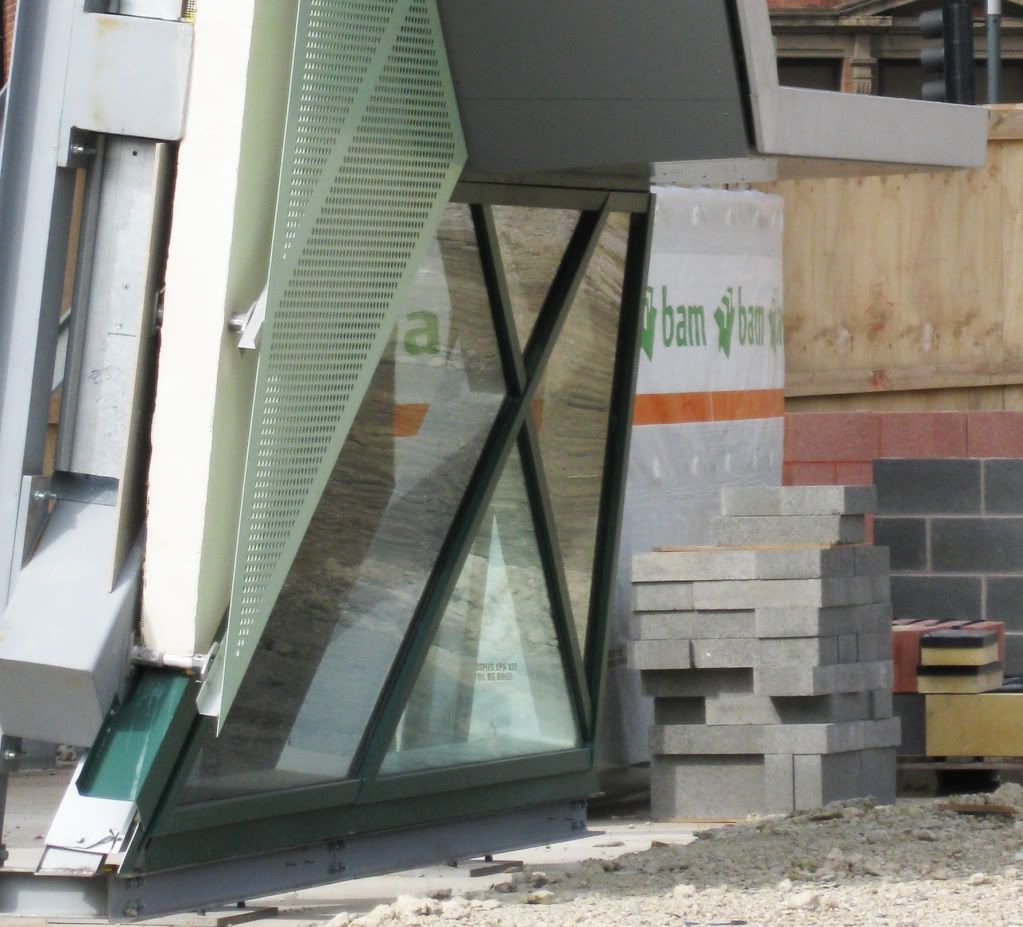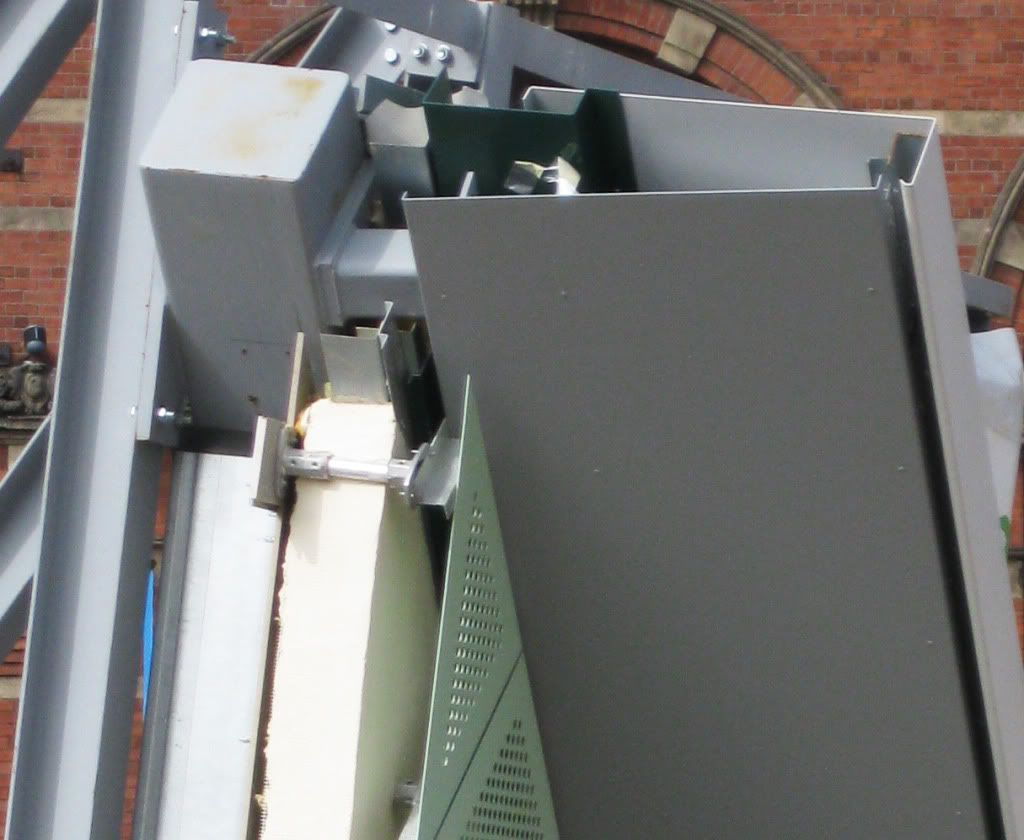David Chipperfield's new gallery space for Barbara Hepworth's sculpures (and other artists' work). Below, external view - not my photograph. The site is on the banks of the River Calder, and the gallery rises from the river like cliffs from the sea. The industrial aesthetic is quite apparent, the pitched roofs of warehouses populate the short walk from the train station to the gallery. The location therefore is excellent - unlike, for instance, the Royal Armouries in Leeds and The National Glass Centre in Sunderland, which are just about in the middle of nowhere hence the poor visitor numbers.
The facade was constructed from a number of identical concrete panels, and these panels were the smoothest concrete I've ever felt. Not that I've felt much smooth concrete, or know much about smooth concrete. Whenever I try and make concrete I always end up with a crumbly grey mess.

I was chatting to a gallery assistant who had written her dissertation on the design of the building who was so relieved that Chipperfield won the RIBA competition to design the gallery and not, for instance, Hadid. Each of the gallery spaces were designed to house a certain exhibit - some of Hepworth's sculptures are huge and require tall ceilings, natural light etc. Because the gallery mainly houses sculptures and not light-sensitive paintings, it meant that the design team could place windows much more freely than in a conventional gallery. These windows are located on the external edge of the facade, meaning that the reveals from the inside are deep, I'd guess 600-700mm. These are well placed to give specific views over the river, external exhibits and Wakefield cathedral.



I was not allowed to take photographs of the sculptures, but I was more interested in the light-wells above them anyway. The light detailing on every gallery space was similar - the roof light was only visible if you were right up against the wall. The angled roof and white walls meant that natural light flooded down onto Barbara's sculptures in the centre of the gallery. These light voids were opposite the window openings.
I noticed that these sky lights had blinds to control the sunlight, and also noticed a bit of archi-cheating - there were also artificial lights that boosted the amount of light that reflected down into the gallery. These weren't that obvious in June, but I'd imagine might become more clear in the winter months. I wasn't too impressed by the spotlights hanging from the ceiling but I'd imagine this is probably the best (and mot flexible) way to focus light on certain exhibits:










































